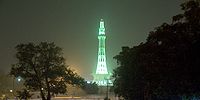ISLAMABAD: The Drug Regulatory Authority of Pakistan (Drap) is preparing a computerised database of all medicines available on the open market after two medicines for radically different maladies appeared on the market at the same time with the same name.
“There are around 72,000 registered medicines available in the market, of which as many as 52,000 have been registered in the database. After the compilation of a centralised database, the chances of two drugs being registered under the same name will be greatly reduced,” Drap Chief Executive Officer Dr Muhammad Aslam told Dawn on Friday.
“There has only been one case where the same name was given to two different medicines, but now that error has been rectified,” he said.
The case he is referring to involves two drugs named ‘Valtec’. According to the website
www.druginfosys.com, one of them belongs to Genome Pharmaceutical (Pvt) Ltd while the other is manufactured by Tabros Pharma.
Pharmacist Fakhir Raza Chaudhry told Dawn that he could not believe it when he learnt about the error.
“I was convinced that something like this could not happen, but then I checked the website and was shocked to discover that there were indeed two medicines with the same brand name. One medicine of them is a treatment for epilepsy while the other is for people who suffer from blood pressure,” he said.
“When prescribing medication, doctors don’t normally write the chemical or scientific name, and consequently, the pharmacist can easily give the customer the wrong drug if there are two medicine with the same name. In addition, many medical stories employ normal salesmen without the oversight of a licenced pharmacist, so it is very likely that they will just look at the name of the drug and hand it over without checking the chemical contents,” he said.
“This blunder indicates that such duplication of names is a very real possibility and there may yet be more drugs out there like this. The concerned departments should ensure that only one medicine is be registered under a brand name, otherwise people’s lives can be put at risk,” he said.
A doctor at Polyclinic, requesting anonymity, said that while this kind of an oversight is not possible in most parts of the world, “but anything can happen in Pakistan”.
“I just cannot believe that two drugs were registered with the same name. Drap should take steps to avoid such a blunder in the future,” he said.
“Unfortunately, government officers spend most of their time in internal politics and corruption and do not focus on serious issues within their jurisdiction. Handing over a brand name to a particular drug is a very sensitive issue and should be taken seriously,” he said.
The Drap CEO, however, maintained that brand registration was done manually in the past, adding that because of this “it was very difficult to ensure that there are no two medicines with the same name. So the Health Ministry used to get an affidavit from the company testifying that there is no other drug available on the market with the same name,” he said.
“Drap learnt about the Valtec issue in June 2014. It was then decided that since Tabros Pharma registered medicine first, it could continue using the same name, while Genome Pharmaceutical (Pvt) Ltd was told to change the name of its drug to ‘Dirite’,” he said.
Abdul Rehman, a representative for Genome Pharmaceutical confirmed to Dawn that his company had registered the drug named Valtec.
“We were not aware that another drug with the same name was already available in the market. When the first batch went out, we were told by healthcare practitioners that there has been a duplication of names. We contacted Drap and informed them about the problem and suggested that it register our medicine under the Dirite name,” he said.
Mr Rehman said that while choosing the name of a new drug, companies depend on the website
www.druginfosys.com. Drap also ensures that drugs with the same name are not already present in the market, but still there is still a chance of error because not all drug names were available on the website.
Published in Dawn, August 23rd, 2015









